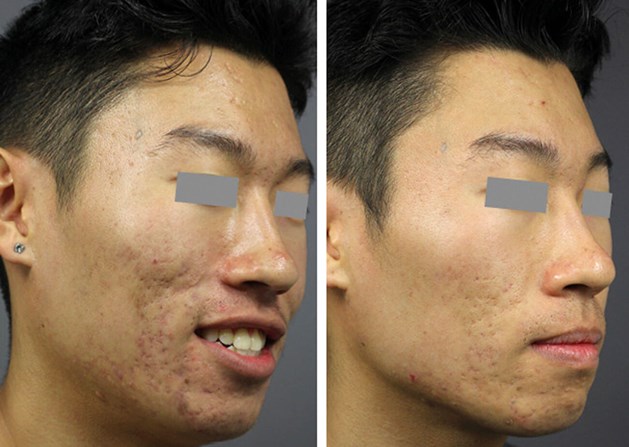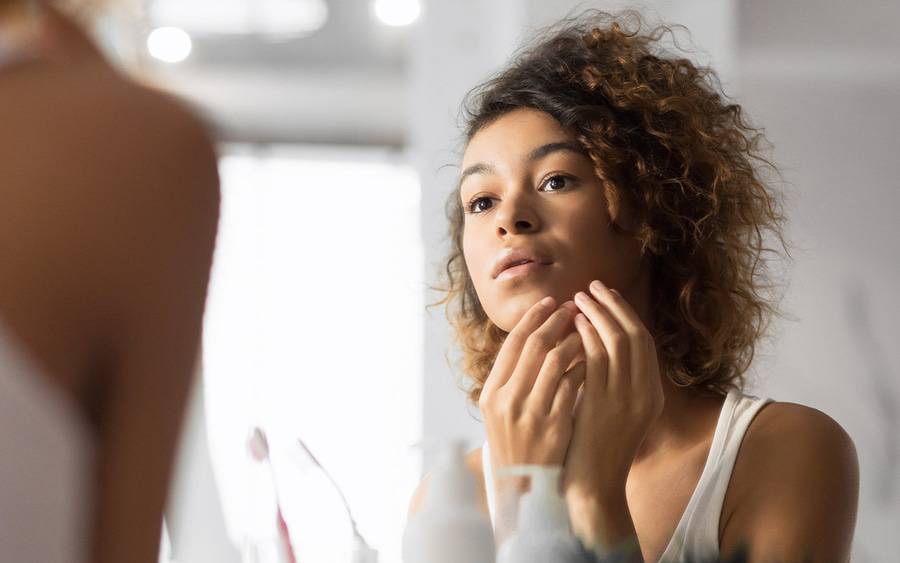Comprehensive Acne and Acne Scars Treatment: Recover Your Skin's Natural Beauty
Comprehensive Acne and Acne Scars Treatment: Recover Your Skin's Natural Beauty
Blog Article
Exploring Skin Disease: Identifying and Dealing With Acne Scars for Healthier Skin
Acne marks stand for a substantial concern for people looking for to keep healthy and balanced skin, as they can impact both appearance and self-esteem. Understanding the various kinds of marks, from atrophic to hypertrophic, is crucial for determining appropriate treatment alternatives.
Understanding Acne Marks

The body's all-natural recovery process can result in either atrophic marks, which look like anxieties in the skin, or hypertrophic scars, which are elevated and result from overproduction of collagen. In addition, the psychological toll of acne marks should not be taken too lightly; several people report feelings of embarrassment, anxiousness, and lowered self-worth. This emotional burden can impact social communications and general lifestyle.
Dealing with acne marks calls for a thorough understanding of their development and impact. Understanding of the possibility for lasting effects linked with without treatment scars can encourage individuals to look for appropriate treatments. Early treatment and reliable management strategies can significantly improve skin appearance and boost psychological strength, emphasizing the significance of comprehending the intricacies bordering acne marks.
Kinds of Acne Scars
Acne scars can be classified into distinctive kinds, each exhibiting distinct qualities and requiring particular treatment approaches. acne scars treatment. The primary sorts of acne scars consist of atrophic, hypertrophic, and keloid marks

Hypertrophic marks, in comparison, are elevated over the skin level and are the outcome of extreme collagen manufacturing throughout the recovery procedure. They normally remain within the limits of the original acne sore. Keloid scars are similar but expand beyond the initial injury site, forming larger, increased areas that can be unpleasant or itchy.
Recognizing these sorts of marks is essential for picking ideal treatment options. Various scars might react far better to specific therapies, such as laser treatments, fillers, or medical interventions, highlighting the significance of a tailored technique to acne scar monitoring.
Determining Your Marks
When assessing the appearance of your skin, it is important to accurately determine the sort of marks existing, as this will educate one of the most efficient treatment approach. Acne marks typically come under 2 classifications: atrophic and hypertrophic scars. Atrophic scars, which are one of the most usual, appear as clinical depressions or indentations on the skin. These can further be categorized right into ice-pick marks, boxcar scars, and rolling scars, each showing unique attributes and calling for different methods for evaluation.
Hypertrophic scars, on the various other hand, are elevated and occur because of extreme collagen manufacturing throughout the recovery process. Acknowledging the specific functions of your marks-- such as size, depth, and appearance-- is important for proper recognition (acne scars). In addition, think about the circulation of marks across your skin, as this can suggest the intensity and duration of the acne problem
Engaging with a dermatologist can offer important insights into the nature of your marks, helping in the differentiation in between various types. A comprehensive understanding of your marks will ultimately cause a more tailored and reliable read this article treatment strategy, making sure a more clear and healthier skin.
Therapy Alternatives Available
Determining the details kind of acne scars existing on your skin prepares for checking out effective therapy choices. Usual types of acne scars include atrophic look at here now (depressed), hypertrophic (elevated), and post-inflammatory erythema.
For atrophic marks, options such as chemical peels, microneedling, and laser resurfacing are commonly made use of. Chemical peels use acids to eliminate the external layer of skin, promoting new cell growth.
Hypertrophic scars can be treated with corticosteroid shots to flatten the scar or laser treatment to reduce redness and improve look. Silicone gel sheets and pressure dressings might likewise help in managing increased scars.
Furthermore, facial fillers can momentarily complete anxieties from atrophic scars, while medical excision might be appropriate for extreme cases. Each treatment choice has its factors to consider and advantages, making it crucial to speak with a dermatologist. They can give personalized referrals based on the type and seriousness of your scars, in addition to your skin kind and general health and wellness.
Tips for Avoidance
Reliable prevention methods can significantly minimize the possibility of developing acne scars. The initial step is to maintain a consistent skin care regimen that consists of mild cleansing, exfoliation, and hydrating. Making use of non-comedogenic products aids stop clogged up pores, which can intensify acne. In addition, incorporating topical treatments containing salicylic acid or benzoyl peroxide can successfully manage outbreaks and decrease inflammation.
Preventing need to pick or pop acne sores is essential, as this can lead to deeper skin damages and boost the risk of scarring. Instead, consider utilizing a cold compress or over-the-counter treatments to minimize swelling and inflammation.
Sunlight security is one more crucial facet of prevention; ultraviolet (UV) rays can darken scars and prevent the healing procedure. Applying a broad-spectrum sunscreen with at the very least Full Article SPF 30 daily can shield the skin and promote even healing.
Lastly, preserving a balanced diet plan abundant in vitamins, minerals, and anti-oxidants sustains skin wellness and healing. Remaining hydrated and handling tension levels can likewise play a considerable role in lowering acne flare-ups. By carrying out these techniques, individuals can considerably decrease their chances of creating acne scars.
Verdict
In verdict, understanding and determining acne scars is necessary for reliable treatment and accomplishing healthier skin. Numerous kinds of acne marks, consisting of atrophic and hypertrophic marks, necessitate particular interventions tailored to individual requirements.
The body's all-natural recovery procedure can result in either atrophic scars, which appear as clinical depressions in the skin, or hypertrophic scars, which are increased and result from overflow of collagen. They are further split right into three subtypes: ice choice scars, boxcar marks, and rolling scars. Acne marks usually drop into 2 groups: hypertrophic and atrophic scars. These can additionally be identified into ice-pick marks, boxcar scars, and rolling marks, each showing distinctive characteristics and calling for various techniques for evaluation.
Various types of acne scars, consisting of atrophic and hypertrophic marks, demand particular treatments customized to private needs.
Report this page